| Circular - September 2024: News of patients, help from a Ugandan bank, community outreaches in the north, and progress at Salama |
| MY SON IS NOW GROWING TALL |
| LWANGA MUSITAFAH from MUKONO district NAGALAMA village. Came to ACHERU with a complaint of curved legs from the knees. He is under the care of the peasant farmer grandparents after the separation of his parents. |
| Grandmother narrates "Musitafah came under my care when 2 years old, his legs where a bit curving but not so bad. At first we thought he will be fine but as he was growing the severity increased. I sold my goats and chickens to pay the bone setters around our village because we knew it was a bone issue. But in 6 months of doing the same thing there was no change and I had no money anymore, so I gave up. |
| We had a traditional ceremony at home and among the people who came there was a person who saw him and told us about ACHERU. The villages are just in the same district and the distance from where we stay is not far. He had started complaining of pain every morning and after playing or walking for a distance, I didn't waste another day without bringing him there. |
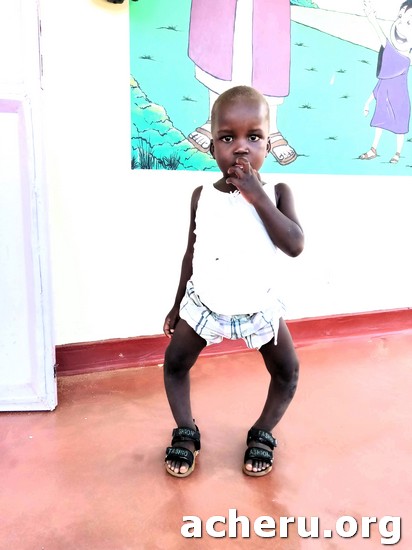
|
| I'm so glad for the people I met the very first day, the place deserves to be called 'AFAAYO' these people care so much, they make you forget all your worries. From the day we started treatment until the last day, we have received the best care. Reaching us at home for encouragement is really heart warming. |
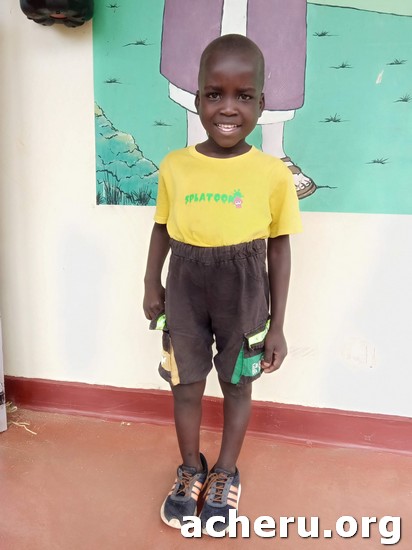
|
| In my village I started the campaign of not letting any child who comes my way to grow up with a disability because I know the right place they can go to. I just give them directions. Thank you so much ACHERU, my grandson who wasn't growing tall is now fine for his age, no complaints with pain as it was before and he can walk a distance" |
| GOD BLESS YOU SO MUCH. |
| Written by Rose Nakabugo |
| Another former patient. Mirembe Harriet, who is on page 23 of the Acheru Children book. We try to keep in touch with as many of the children as possible, and after the last visit she was found to be doing well and now works in a shop. |
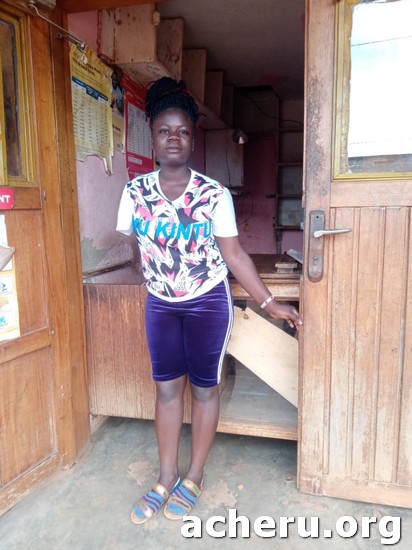
|
| Acheru continues to be heavily dependent on Africare for support, which we expected and fully understand, but they are also doing what they can to generate support in Uganda. An important part of this is asking children's families to contribute to their care and surgery, though of course no child will ever be turned away if the family can't help. But assistance is sought in other ways too; in the past it was difficult to get charitable help from Ugandan organisations or businesses but gradually this is changing although we must recognise that any Ugandan organization known to provide help to charity is going to be bombarded with requests. However, Acheru sets high standards and we believe we have something to 'sell'. Those who see the work for themselves are invariably impressed with the way it is run, and in particular with the outcomes, the very visible changes in the children. |
| This year a major bank, the Development Finance Company of Uganda, is celebrating its 60th year of business. As part of this they wanted to assist a local charity, and considered applications for help. We were delighted when, having carefully evaluated 30 applications, Acheru was chosen. Bank staff came to Acheru for a day and the Acheru staff were able to present their work. |

|
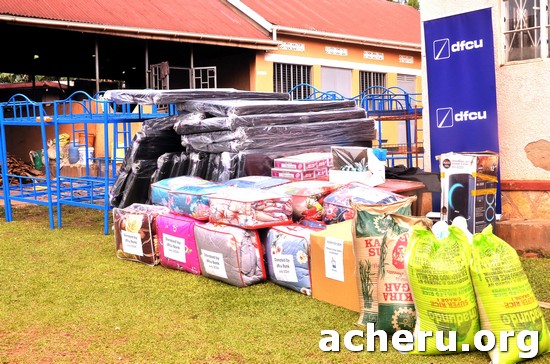
|
| The visitors also heard testimony from a number of children, there was a real 'party' atmosphere, and clearly the work made an impression on the visitors. This is all part not just of making our own work more widely known but of raising awareness of disability against a background where so many children are still kept out of sight. |
| The visitors also brought gifts - bunk beds (great for Acheru, the child can use the lower bunk with their carer above), mattresses, bedcovers, sheets, pillow cases, bags of sugar and rice, boxes of soap, boxes of biscuits, clothes for mothers and children. |
| I think the day at Acheru will have made a lasting impression on our guests and it was also an opportunity for our staff, who take such pride in their work, to showcase what can be done for disabled children. |
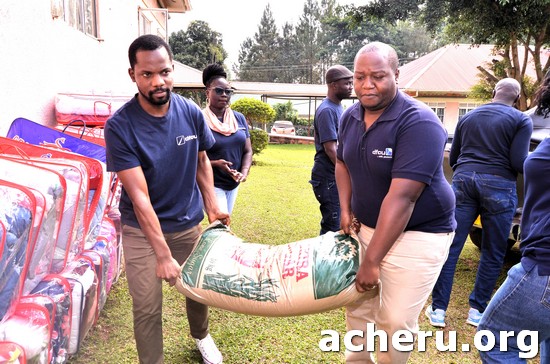
|

|
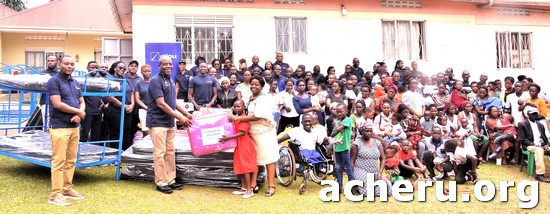
|
| It is still our intention to establish a small permanent base at Napak in Karamoja, as our services are badly needed there. However, it's a developing area with many difficulties and while we have already established several valuable partnerships, it's a changing area with a growing population and we need to know more before committing ourselves to building. We are looking closely at how other medical services might develop there before deciding exactly where we might fit in. Meanwhile, we know there are many disabled children who need us and we don't want to keep them waiting. |
| Acheru has a very effective 'interim' arrangement, taking a team there for a community outreach every few months. With proper preparation by local partners, radio advertising etc, many children can be assessed and referred as appropriate for treatment. We hope to be able to maintain this arrangement while also looking at longer term plans. |
| It's a 10 hour journey to Napak. The team stay overnight then spend a long day typically seeing around 80 children before another overnight stay and return to Kabembe. I know they are trying to minimize costs, so I asked if it wouldn't be better to stay an extra night, but they are satisfied that with proper advance preparation, one day is enough for the outreach. |

|
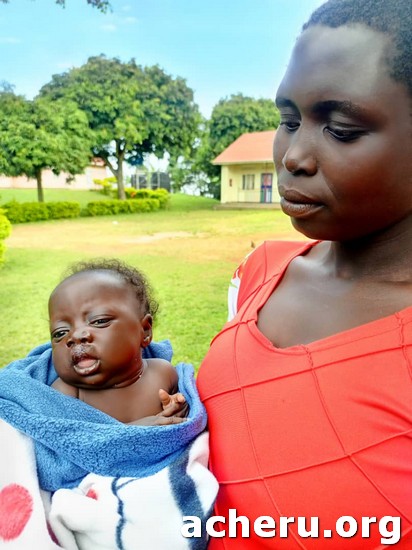
|
| The two local part time workers are Kachi Annah and Martin, who works in a local hospital. While the most urgent cases are brought to Acheru by the team, these partners can then continue to send more children by public transport or help with follow up of returning patients. It's an effective compromise for now but we still see the need for a permanent base with one or two full time staff to handle assessments, referrals, and outpatient treatment. There were many more children with Cerebral Palsy than we expected - certainly too many to bring back to Kabembe for treatment. |
| The model for what might be done in Napak is the work we carried out at Minakulu, near Gulu. Now that the unit has been handed over to local services we continue to receive referrals and occasional community outreaches are held in Oyam district to try to 'sweep up' those children who might not otherwise be brought for treatment. Joyce reports that on the last visit they saw a total of 84 children during a long day, with the last seen at 7.40pm. Alex, the father of a former patient who served as our community worker at Minakulu now works for us part time to deal with preparations for the outreach and subsequent follow up. The team brought back seven children for treatment at Acheru, with less urgent cases to follow. |
| Of those brought back, one had a cleft lip, another a cleft palate. Disfiguring and likely to result in fear and the rejection of the child, treatment is life changing for them, but relatively straightforward (and cheap!) for us. We have various surgical partners, and clefts can now be dealt with in Mukono at the Trinity Bajjo Medical Centre. They don't charge us for clefts but we have to pay for other surgery. It's great to have them so close to Acheru; they want to treat as many clefts as possible, but of course it then falls to Acheru to actually find them so it's a good, mutually beneficial, partnership. |
| The children spent two days at Bajjo having surgery, then two days at Acheru before going home. Such a short time for something so life changing, and of course the change is very visible so will help encourage other parents to present children for treatment. |
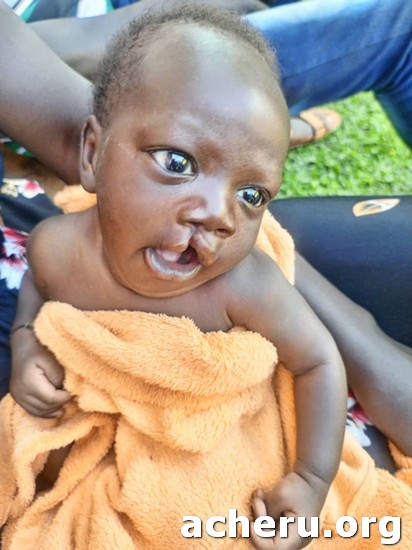
|
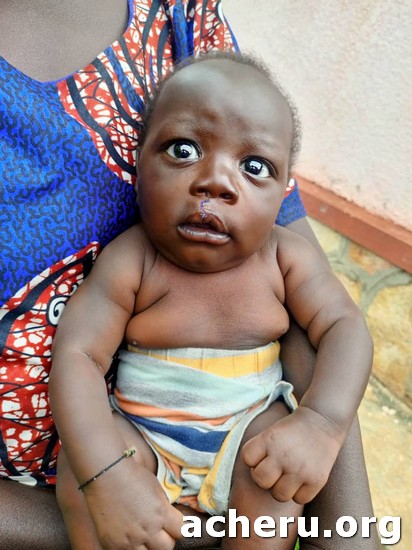
|
| Another significant encouragement on the last visit to Oyam was meeting several former patients, now adults, who are doing well but who simply wouldn't be alive now had it not been for our intervention. |
| Following the devastating fire at Salama we were seriously concerned about whether parents would still want to send their children there. However, it's a good school and with completion of the new dormitory there's room for growth so the school did all they could to promote what they have to offer. It continues to be the only central region school solely for blind children. I was very pleased to see that their enrolment is now 80 children and rising, well above the numbers in the school before the fire. |
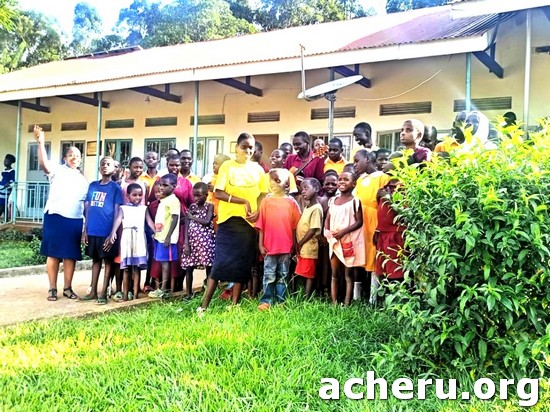
|
| Joyce continues to visit Salama with a team from Acheru. She also brings a local pastor, Emmanuel, to organize fellowship and recreation with the children. Emmanuel has a music business and has been able to arrange repair of some of the schools musical instruments; it is still our aim to develop music instruction there and to identify children with any musical ability. |
| Looking at what's there now I reflect on my first visit to Salama. Francis, the recently retired headmaster, came to see me at Besaniya many years ago to ask if I could help him. I went to Salama, and what I saw was distressing. Francis, who had originally been a pupil there himself, was trying to run the school but faced serious problems. The buildings were in disrepair, there were only a small number of children, and some of them had been abandoned there by parents who never came back for them. The school had no income to deal with any of the problems. I was, however, encouraged by Francis' commitment to the school and his efforts to keep it going. I was able to help direct work teams from Evangelical Ministries in Northern Ireland there to deal with some of the problems, and groups of boys from Besaniya started visiting to provide practical help. One of them was James Mulira who continued his involvement after he qualified as a lawyer and went on to serve on the school board as it developed. |
| As with many projects, they are dependent on one person's vision and the help I tried to provide was as a result of Francis' determination. Thankfully James Mulira also came to share that vision and did a great deal to support Francis. Salama became a government school, they built new classrooms, and now there's the new dormitory. Now there's also a new headmistress, which required adjustment from those who had worked with Francis for so long, but Joyce has been working with her and we hope for a fruitful relationship which can benefit the children not just now but in the future. We hope that Acheru, with their experience of community work, can find ways to maintain contact with the blind children after they leave school so that their development can continue. |

|

|
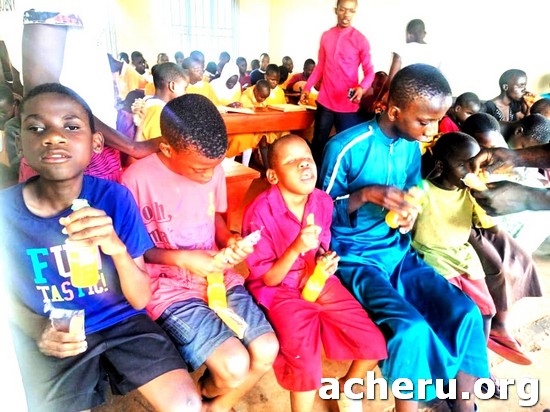
|



















